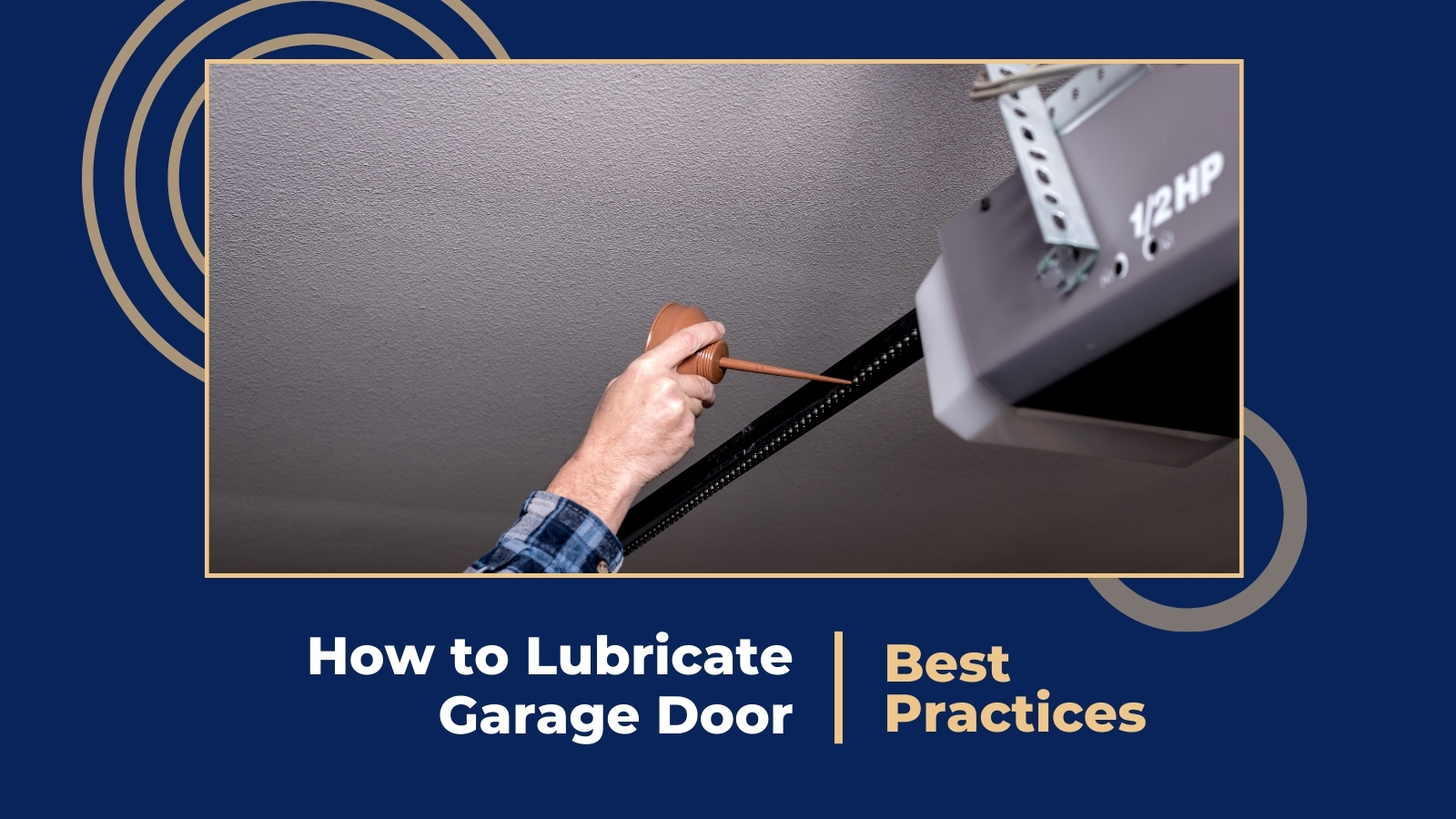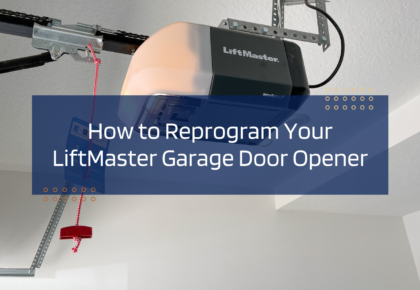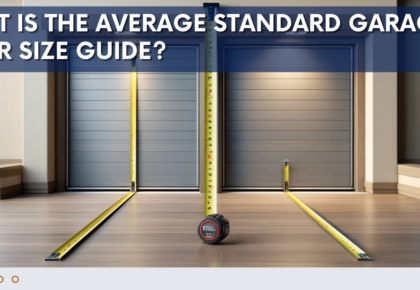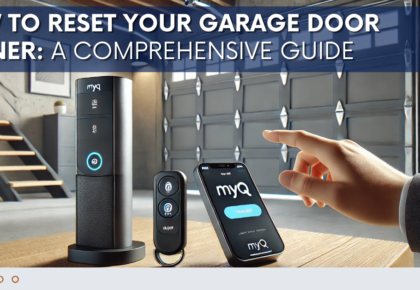Lubrication is essential to the smooth running and durability of any garage door. Correct lubrication makes no noise, will not have excessive wear and tear, and helps all the working parts to run at peak operation.
Malfunctioning from lack of proper lubrication can result in costly repairs; as such, this tutorial seeks to guide one on the best ways to grease their garage door so that it will work silently and efficiently for years.
Why the Garage Door Needs Lubrication
Lubricating the garage door is essential for several reasons, including:
Reduces Noises: A well-lubricated garage door will not make noise while it goes on running. This may be important, especially if your garage is attached to your home.
This may present only the difference needed, specifically if you have a bedroom or living space near the garage.
Reduces Wear and Tear: It reduces friction between the moving joints; hence, it prevents damage and wear out of your garage door.
With time, this repetitive movement can result in immense wear on the hinges, rollers, and coil springs.
Lubrication regularly can reduce the wear-off of these parts.
Ensures Smooth Operation: The lubrication makes parts move quickly on each other, hence giving minimum pressure to the garage door opener and all its different elements. That is going to improve not only the functionality of the door but also ensure an individual gets access into it and out with less hassle.
Tools: Other Equipment/Materials Needed Before you lubricate, make sure to have these tools or materials within your reach. Garage door lubricant itself—silicone-based or lithium-based spray
Clean cloths or rags
A step ladder, if needed
Pair of protective gloves and safety goggles; the latter is optional but indeed recommended.
Using the right materials ensures the lubrication process is efficient and effective.
Silicone-based lubricants are preferred since they don’t attract dirt or dust, unlike the regular oils. Lithium-based greases are also excellent in that they offer long-lasting lubrication and protection against rust.
How to Lubricate your Garage Door Step-by-Step Instructions
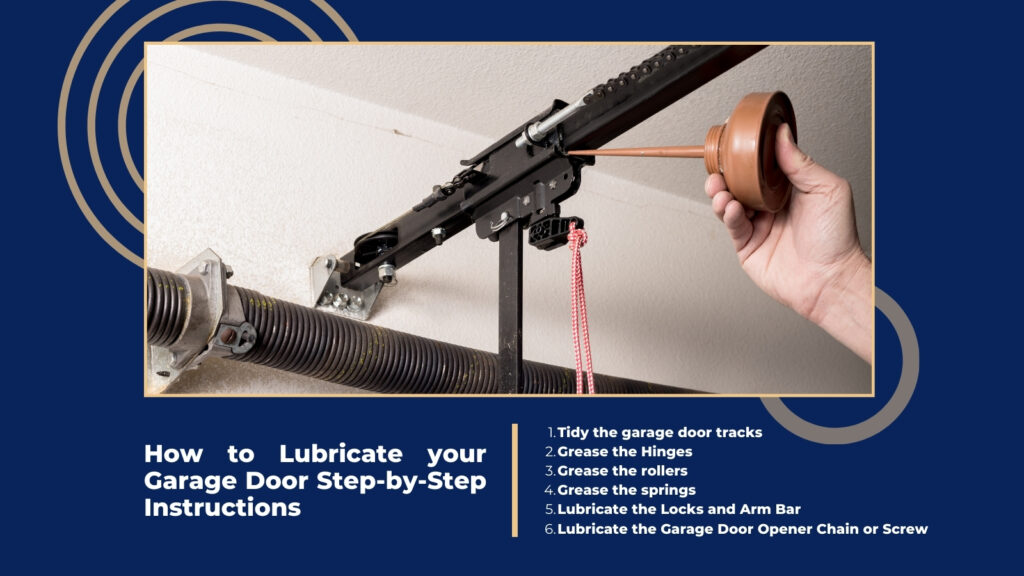
1. Tidy the garage door tracks
Start by cleaning your garage door’s tracks on both sides of the door. And then, you lubricate the track itself; it makes the track free of dirt and other waste to have relatively simple action.
Wipe the whole track with the damp cloth. You must reach to the bottom and top of the track.
Avoid heavy grease, as it will only invite more filth and accumulate it. If necessary, clean with a mild cleaner to rid the areas of stubborn grime.
2. Grease the Hinges
Hinges are crucial for the door’s smooth movement. Lubricate each hinge where it pivots:
Lubricate the pivot points slightly. Apply in the crevices, especially where the metal parts join.
Move the door up and down several times to spread the lubricant.
You must ensure that the lubricant spreads adequately inside the pivot mechanisms.
3. Grease the rollers
Rollers, particularly metal ones, must be lubricated regularly to prevent them from making noise and wearing out:
If you have roller bearings, you can spray a little lubricant on those. The bearings are the little moving parts inside the roller, turning as the door opens and closes.
Do not lubricate the nylon rollers, but if they are with metal bearings, lubricate these. Usually, the nylon rollers do not require any lubrication; the condition is still to be observed.
4. Grease the springs
The torsion springs and the extension springs will also require a bit of lubrication to work perfectly. Spray a good amount of lubricant along the length of the springs.
It helps reduce friction and prevents rusting of the springs. Now, open and close the door several times to spread the lubricant in all areas of the spring coils. It evenly spreads the lube in the spring’s core coils.
Apply enough lubricant to your springs so that there could be as little fiction as possible and prevent rusting.
Open and close the door a few times to spread this lubricant. This can facilitate the lubricant getting onto the coils of the spring.
5. Lubricate the Locks and Arm Bar
Lubricate the lock mechanism and arm bar for smooth operation:
Spray some lubricant into the keyhole and all moving parts of the lock. This will keep the lock mechanism running smoothly by preventing it from sticking.
Apply some lubricant to the arm bar and check for smooth movement. The arm bar joins the door to the opener, and this part of the mechanism should move without friction to prevent additional pressure from being put on the opener motor.
6. Lubricate the Garage Door Opener Chain or Screw
If your garage door opener is driven by a chain or screw drive, these components must be lubricated periodically:
For chain drives, lightly mist some lubricant onto the chain. Be sure to treat the entire length of the chain.
Apply lubricant along the screw. While this type of opener does not need much lubricating, periodic applications still often help.
Effective Lubrication Tips
Use the Right Lubricant: Either silicone- or lithium-based lubricants would do. Do not use WD-40 or heavy grease. Such lubricants are specifically made to withstand the pressure and motion a garage door mechanism undergoes.
Apply Sparingly: Too much lubricant, when applied excessively, will catch dirt and commence buildup. Coat moving parts lightly. Too much lubricant makes a sticky residue that collects dust and debris.
Regular Maintenance: Lubricate your garage door semi-annually to ensure optimal performance. This regular maintenance schedule allows the identification of problems at an early stage before they become major.
FAQs on Garage Door Lubrication
How often should you lubricate your garage door?
Going by professional advice, your garage door should be lubricated every six months to ensure its smooth functioning and avoid its wear and tear. You might have to lubricate more frequently in harsh climates or high-use situations.
Will WD-40 lubricate a garage door?
WD-40 won’t lubricate a garage door. You want silicone-based or lithium-based lubricants, especially in your garage doors. WD-40 will give you some slight, short-term noise abatement but is a very short-term idea, terrible for lubrication and protection in the long run.
Which parts of the garage door should you not lubricate? Avoid at all costs lubricating the tracks because it can cause buildups, which will hinder the smooth passage of the door on the track.
However, the tracks must be kept clean and dry, for lubrication may attract dirt and other small particles that block the pathway to form blockades, sure to disrupt the smooth flow of the door.
Conclusion
Lubricating your garage door is a relatively simple duty that stretches its life and gives you smooth, silent operation. Following the best practices in this guide keeps your door in top condition with minimal effort, which will save you from huge repair costs and uniformly improve performance.


